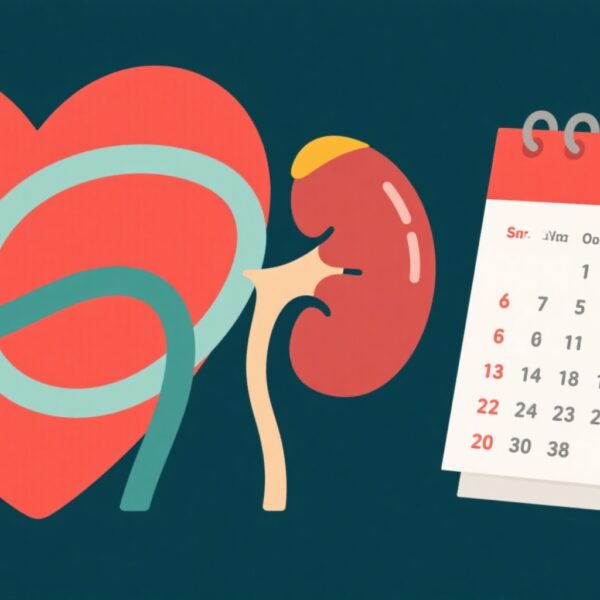亮点
- 与常规护理相比,第二代可穿戴HRVB在一项针对SUD成人的稳健随机临床试验中减少了负面情绪和渴求,并降低了64%的酒精和其他药物(AOD)使用。
- HRVB打破了典型的渴求-AOD使用链,调节了个体内部在渴求发作后的复发风险,表明了临床获益的机制途径。
- 补充研究支持HRVB在减轻各种物质类型(如甲基苯丙胺、酒精)和人群中的渴求、焦虑和抑郁方面的有效性,同时还改善了自主功能和睡眠质量。
- 局限性包括先前研究的样本量较小以及干预持续时间和技术的异质性;然而,最新的二期试验强调了第二代门诊HRVB虚拟交付的可行性和影响。
背景
物质使用障碍(SUD)仍然是一个全球公共卫生挑战,其特征是慢性复发模式和高发病率及死亡率。渴求和负面情绪是已知的复发近端触发因素,但传统的心理社会和药理治疗方法效果不一。心率变异性生物反馈(HRVB)是一种非侵入性干预措施,通过节奏呼吸和生物反馈调节自主神经系统,因其减少渴求、焦虑和负面情绪的潜力而受到关注。尽管早期研究已经表明HRVB的治疗前景,但全面的临床试验评估其对物质使用结果的影响,尤其是使用先进可穿戴技术的研究,仍然缺乏。
关键内容
HRVB在SUD中证据的时间发展
初步研究(约2010年代中期)集中在酒精依赖住院人群中,表明短期HRVB训练可以减少渴求和焦虑,并改善心率变异性等自主参数和血管运动功能(NCT DRKS00004618)(Paul等,Neuropsychiatr Dis Treat, 2015;Jung等,BMC Psychiatry, 2017)。后续研究表明长期戒断趋势有所改善,但样本量有限。
平行研究扩展了HRVB在甲基苯丙胺使用障碍中的适用性(Wang等,Int J Environ Res Public Health, 2022),显示在门诊环境中HRVB辅助治疗显著减少了渴求和依赖严重程度。其他试验探讨了HRVB在改善该人群睡眠质量和缓解抑郁症状方面的效果(Liu等,J Psychiatr Res, 2023)。
在各种SUD人群中进行的非随机和随机对照试验,包括大学康复住房居民(Zucker等,J Subst Abuse Treat, 2018)和住院康复中的酒精使用障碍患者(Jaidee等,Psychol Res Behav Manag, 2019),一致报告了渴求和压力指标的下降,突显了HRVB的转化效用。
第二代可穿戴HRVB:多中心二期随机临床试验(Eddie等,JAMA Psychiatry, 2025)
这项具有里程碑意义的二期临床试验首次评估了第二代可穿戴HRVB技术在美国各地种族和性别多样化的门诊SUD队列中的有效性(N=120)。参与者被随机分配接受8周的HRVB加常规治疗(TAU)或仅TAU。
主要的生态瞬时评估显示,在8周期间,HRVB组的负面情绪(b = -0.01;P = .001)和渴求(b = -0.01;P < .001)显著降低,而对照组则增加。积极情绪无显著差异。
至关重要的是,HRVB与AOD使用天数减少了64%(OR, 0.36;95% CrI, 0.25-0.54)相关。干预措施调节了渴求-使用关系(OR, 0.84;95% CrI, 0.73-0.97),表明HRVB可能通过打破渴求与随后物质使用之间的联系而产生机制上的益处。
补充证据和机制见解
研究表明,HRVB增强了副交感神经活动,改善了心脏自主平衡和情绪调节(Lehrer等,J Altern Complement Med, 2018)。应激恢复能力的提高可能介导渴求的减少,从而降低复发风险。在怀孕吸烟者(Roos等,Addict Behav, 2024)和纤维肌痛患者(Gioscia等,Pain Manag Nurs, 2020)中的研究进一步证明了HRVB在应激和症状管理方面的多功能性,支持其更广泛的身心效用。
将HRVB与适应性体育活动计划整合的新协议(NCT03356171)在癌症幸存者中突显了可能的协同效益,提高了生活质量并改善了心理福祉,提示其在复杂共病人群中的潜在应用。
专家评论
Eddie等最近的二期试验代表了一个重要进展,利用第二代可穿戴HRVB设备提供了可访问性、实时反馈和门诊实施,从而增强了生态效度。通过打破渴求-使用关联而显著减少AOD使用天数和渴求,突显了HRVB的治疗价值不仅限于症状缓解,还可能修改复发路径。
然而,局限性需要考虑。干预效果超过8周的持久性需要在更大规模的三期试验中确认。积极情绪未发生变化,表明HRVB的效果可能更倾向于负性情感状态。盲法和安慰剂效应仍是HRVB研究中的方法学挑战。此外,不同物质、严重程度谱和共病精神状况的异质性可能会影响反应性。
临床整合需要标准化的方案、培训和依从性监测。HRVB的低风险、经济性和可行性使其成为现有行为和药理治疗的候选辅助工具。未来研究应阐明预测反应的生物标志物并阐明自主调节与渴求调制之间的机制联系。
结论
心率变异性生物反馈,特别是通过先进的可穿戴技术,作为一种有前途的非侵入性辅助干预措施在SUD管理中崭露头角。从早期住院研究到最近的稳健二期试验,证据轨迹确认了HRVB在减少渴求、负面情绪和物质使用方面的能力,通过打破渴求引起的复发路径实现机制上的调节。
在更大的三期试验中得到验证后,HRVB可能有助于增强个性化康复策略,降低复发率,并提高SUD患者的生存质量。多模态整合、更长时间的随访和机制生物标志物是未来研究的关键方向。
参考文献
- Eddie D, Nguyen M, Zeng K, Mei S, Emery N. 心率变异性生物反馈在物质使用障碍中的应用:一项随机临床试验。JAMA Psychiatry. 2025年10月1日。doi:10.1001/jamapsychiatry.2025.2700. PMID: 41032322。
- Wang S, 等。一项关于简短心率变异性生物反馈作为甲基苯丙胺使用障碍男性患者的辅助治疗效果的试点随机对照研究。Int J Environ Res Public Health. 2022年4月25日;19(9):5230。doi:10.3390/ijerph19095230。PMID: 35564623。
- Liu Y, 等。心率变异性生物反馈(HRVBFB)对甲基苯丙胺使用者睡眠质量和抑郁的影响。J Psychiatr Res. 2023年6月;162:132-139。doi:10.1016/j.jpsychires.2023.05.029。PMID: 37149922。
- Paul G, 等。心率变异性生物反馈在酒精依赖患者中的应用:一项随机对照研究。Neuropsychiatr Dis Treat. 2015年10月9日;11:2619-27。doi:10.2147/NDT.S84798。PMID: 26557753。
- Jaidee W, 等。心率变异性生物反馈和Phramongkutklao模型在酒精使用障碍患者中的应激和渴求减少作用。Psychol Res Behav Manag. 2019年8月6日;12:619-627。doi:10.2147/PRBM.S199762。PMID: 31496846。
- Lehrer P, Eddie D. 当前关于心率变异性生物反馈作为辅助抗渴求干预措施的证据。J Altern Complement Med. 2018年11月;24(11):1039-1050。doi:10.1089/acm.2018.0019。PMID: 29782180。


